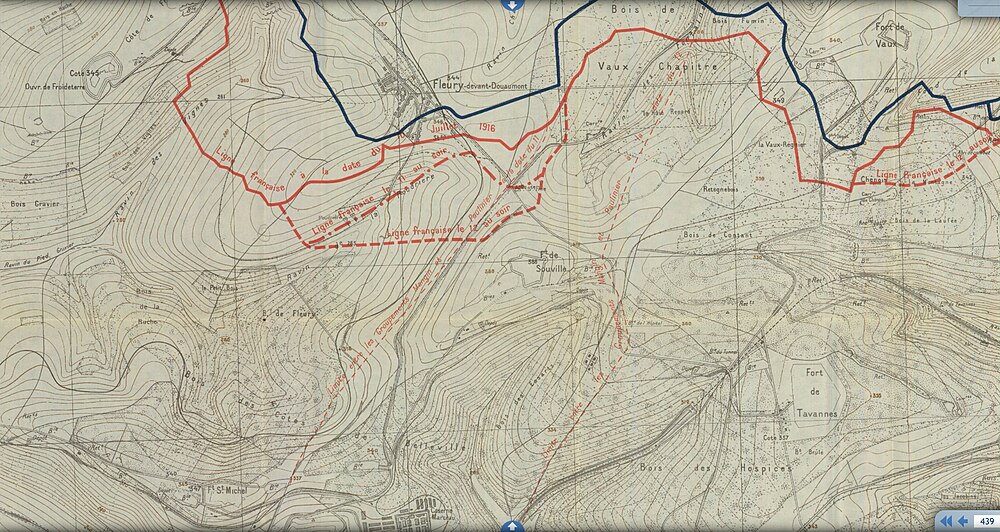User:AlbertoOhist73/sandboxAO73
| Recapture of Fort Vaux | |||||||
|---|---|---|---|---|---|---|---|
| Part of Battle of Verdun 1916 and World War I 1914-1918 | |||||||
 Cover page Mangin Group and storming of Fort Vaux 's war diaries | |||||||
| |||||||
| Belligerents | |||||||
|
|
| ||||||
| Commanders and leaders | |||||||
|
G.A.C Commander G.A.C Artillery Commander Chef Commander 230th RI Commander |
Commander in chief Cdt Maas-Ost-Groupe Area commander 34th DI Commander 9th D Commander 13th DI Commander 25th D Commander 54th D Commander 33rd D Commander 53th RD Commander | ||||||
The recapture of Fort Vaux (French: Reprise du fort de Vaux) by the French troops was a military engagement between October 24 and November 3, 1916 ; during the Battle of Verdun on the French Western Front in World War I.
Fort Vaux has been in the hands of German troops since the beginning of June 1916. This French structure is one of the essential points of the fortification belt around Verdun.
Context
Following a series of German offensive victories (capture of Fort Douaumont, Fort Vaux, Damloup battery, etc.) General Mangin took command of Group D then D and E on June 19, 1916. (Also named Group Mangin).
During the summer, fighting never stops in the area. Each side fights hard for every meter of land. The front constantly moves a few meters or even a hundred meters, and the ground conquered one day by one side is retaken by the adversary the next day.
For example, on July 1, 1916, we observe the most pronounced advance of the Germans towards Verdun. They will be stopped at "La Poudrière", only about 2 km (1.2 mi) from the outskirts of the city of Verdun and 4 km (2.5 mi) from the city center. On the other hand, at the beginning of August, French troops brought the fight to the Fumin woods, only 800 m (0.50 mi) from the Fort.
A most typical example of this territory, tirelessly taken and retaken at the cost of many lives, is the village of Fleury-devant-Douaumont; it changed hands 16 times between June and August 1916, between French and German troops.
Neither side manages to have superiority. The Germans dominated many strategic points, which blocked all attempts at French progress. Specifically, Fort Douaumont, Fort Vaux, Battery of Damloup, the small “depot” (deposit base), post Thiaumont and large numbers of isolated batteries (batteries of the quarries, of the false coast, etc.) as well as many ridges, are in German hands. The French troops, who advance through ravines, gutters and exposed open spaces are systematically pushed back at the cost of many lives.
- On September 7, Lieutenant-Colonel Viotte, commander of the 230eRI, says [3]:
“The situation is less alarming than in the spring but not that good. Over thousands of hectares, the enemy has created a hell of carnage and fire; day and night, its artillery pours an avalanche of projectiles on our lines and the numbers (soldiers) continue to shrink rapidly; the wear and tear is extreme and we feel that an entire winter spent in these conditions would be terrible against an adversary who still holds key points of support on the battlefield.”
It is clear that there have been few convincing outcomes from isolated attacks carried out since June, and we know that the Germans have shifted a significant portion of their resources to the Somme front [3].
- On September 17, 1916, a real turning point occurs when General Mangin made the following proposal; a new strategy before winter and before a reinforcement of German troops from other battles. This change in strategy is backed by his superior, General Nivelle, who will encourage him to always surpass himself.


